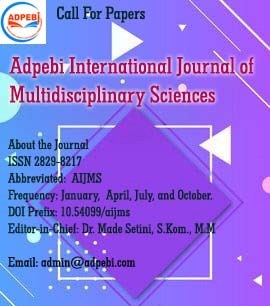Analysis Of Village Potential In Flood-Prone Areas (Study Case in Bengkulu Tengah District)
DOI:
https://doi.org/10.54099/aijms.v1i1.151Keywords:
Potention, Village, Flood-proneAbstract
Purpose – This paper aims to analyze the potential for economic revival of the three villages
Methodology/approach – The research conducted in the villages of Susup, Rajak Besi, and Komering, which were selected purposively. The research location was chosen purposively because it has the most severe economic damage in Central Bengkulu Regency. The first method is the Rapid Rural Appraisal (RRA) technique which requires extensive and informal speaking communication with rural people and observing the local conditions of the community. The second method is the seven-span method. The seven-span method is widely used to classify village potentials based on seven criteria to realize the sustainability of businesses established in rural areas and analyzed descriptively.
Findings – It was found that Susup and Komerig villages have great potential in the aspects of Economic, Social, and Natural Resource. However, it is very weak in aspects of Environment, Human Resources, Market and Technology. Unlike Rajak Besi Village, this village has the potential to be developed after the disaster because it has strengths in the aspects of Economic, Social, and Natural Resources, Human Resources, Market and Technology..
Novelty/value – The importance of village potential to develop regional strategies in the development of post-disaster village areas
Downloads
Published
How to Cite
Issue
Section
License
Copyright (c) 2022 Adpebi International Journal of Multidisciplinary Sciences

This work is licensed under a Creative Commons Attribution-NonCommercial 4.0 International License.









